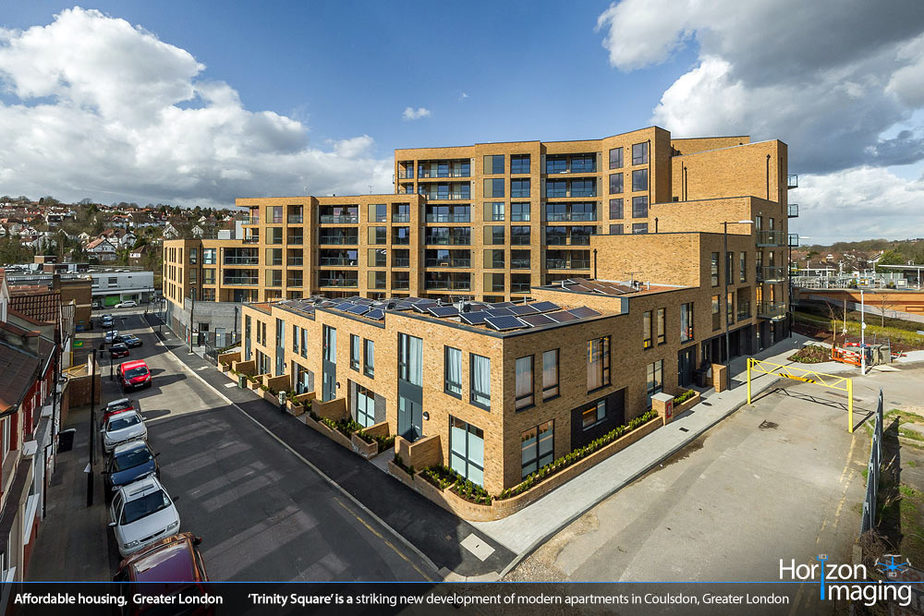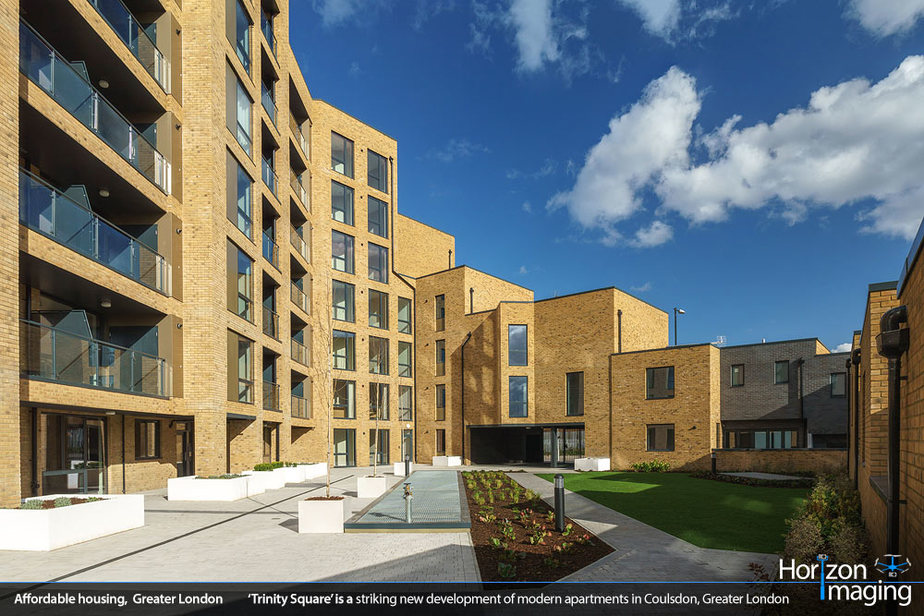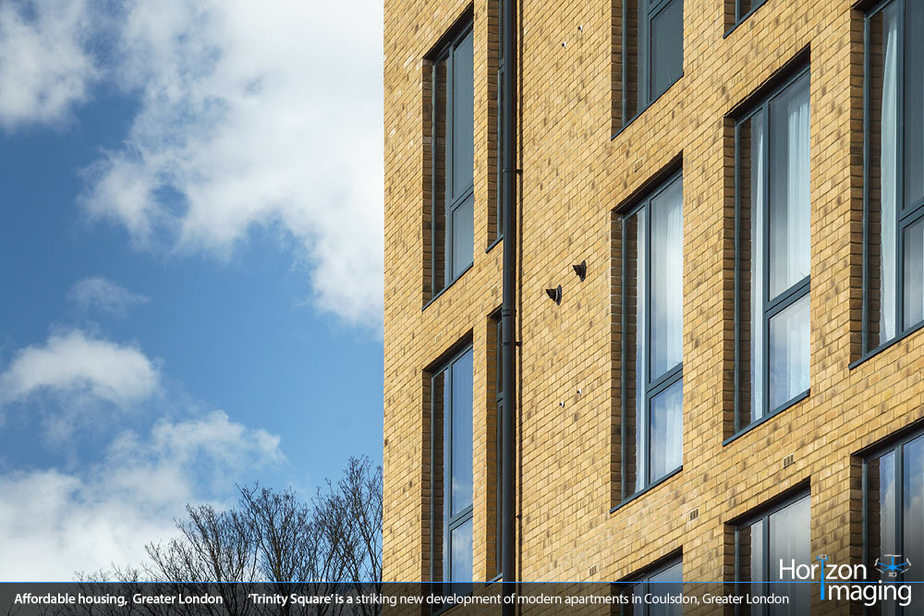Horizon Imaging was recently commissioned to photograph a new housing development in the Greater London district of Coulsdon. The site, ‘Trinity Square’, comprises a collection of 1, 2 and 3 bedroom apartments and mews houses, all finished to a very high standard.
To capture the unique layout and ‘stepped’ design of the development, a range of ground and aerial photographs were taken of the site, with the aerial views being captured using our telescopic mast. To get a real sense of the size of the site, image stitching was used on several of the photographs to compress wide-angle views into single images – a powerful post-processing technique as explained in one of our earlier blog posts.
When capturing overview photographs of architecture such as those shown on the right, it is always worth making sure vertical features (such as the edges of walls, windows and doorways) are aligned vertically in the images. This is achieved through both careful camera work when taking the photographs, and during post-processing where any distortions in the images are corrected. This technique helps to focus the viewer’s attention on the shapes and design of the buildings, rather than wondering why the buildings look crooked or distorted.
Occasionally, the effect of ‘converging verticals’ can be used for artistic effect, for example to exaggerate the height of a structure by making it shrink rapidly into a point at the top of the image. Sometimes it is simply unavoidable though, for example when photographing features high up on a building from ground-level – correcting any vertical features so they are parallel in these photographs would just look strange and unnatural.
Just as important as maintaining vertical lines in architectural photographs is how the scenes are lit – or in other words, what time of day is chosen to photograph a building. Shooting straight into the sun, or with the sun directly behind the camera is usually least favourable, as it can either cause deep shadows (shooting into the sun), or no shadows at all (shooting with the sun behind the camera). Oblique sunshine is usually best as it helps to give depth and dimension to the architecture, and it can also generate interesting reflections from glossy surfaces like glass or metal – who said us photographers were picky with our lighting!
Faithfully capturing a large building in a set of photographs is not simply a case of point and shoot. Generally, more time is spent wandering around a building than is actually spent photographing it, as the slightest change in viewpoint can make a big difference to the feel of the resulting photographs. For more information, please feel free to look at our architectural photography page or browse through our gallery to see some more examples of our work.
An elevated view of the ‘Trinity Square’ modern housing development in Coulsdon, Greater London, taken with our telescopic mast. Click to enlarge.
Architectural photograph of the courtyard of the Trinity Square modern housing development in Coulsdon, Greater London. Click to enlarge.
An abstract architectural photograph of the Trinity Square modern housing development in Coulsdon, Greater London. Click to enlarge.



